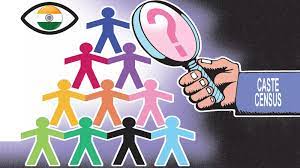CURRENT AFFAIRS
Get the most updated and recent current affair content on Padhaikaro.com
Caste census: Government’s objections to a caste census
- IAS NEXT, Lucknow
- 30, Sep 2021

The Union government last week told the Supreme Court that the caste-based data enumerated in the Socio-Economic Caste Census (SECC) of 2011 was “unusable”, but in 2016, the Registrar-General and Census Commissioner of India had informed the Standing Committee on Rural Development that 98.87% of the data on individual caste and religion was “error-free”.
Why the data is “unusable” according to the government?
- The government had said that the total number of castes surveyed in 1931 was 4,147, while the SECC figures show that there are more than 46 lakh different castes. Assuming that some castes may bifurcate into sub-castes, the total number can not be exponentially high to this extent.
- The entire exercise was corrupted because the enumerators had used different spellings for the same castes. In many cases the respondents, the government said, had refused to divulge their castes.
How have caste details been collected so far?
- While SC/ST details are collected as part of the census, details of other castes are not collected by the enumerators. The main method is by self-declaration to the enumerator.
- So far, backward classes commissions in various States have been conducting their own counts to ascertain the population of backward castes.
What kind of caste data is published in the Census ?
Every Census in independent India from 1951 to 2011 has published data on Scheduled Castes and Scheduled Tribes, but not on other castes. Before that, every Census until 1931 had data on caste.
What is SECC 2011?
The Socio-Economic Caste Census of 2011 was a major exercise to obtain data about the socio-economic status of various communities.
- It had two components: a survey of the rural and urban households and ranking of these households based on pre-set parameters, and a caste census.
- However, only the details of the economic conditions of the people in rural and urban households were released. The caste data has not been released till now.
Difference between Census & SECC:
- The Census provides a portrait of the Indian population, while the SECC is a tool to identify beneficiaries of state support.
- Since the Census falls under the Census Act of 1948, all data are considered confidential, whereas all the personal information given in the SECC is open for use by Government departments to grant and/or restrict benefits to households.
Pros of caste census:
The precise number of the population of each caste would help tailor the reservation policy to ensure equitable representation of all of them.
Concerns associated:
- There is a possibility that it will lead to heartburn among some sections and spawn demands for larger or separate quotas.
- It has been alleged that the mere act of labeling persons as belonging to a caste tends to perpetuate the system.